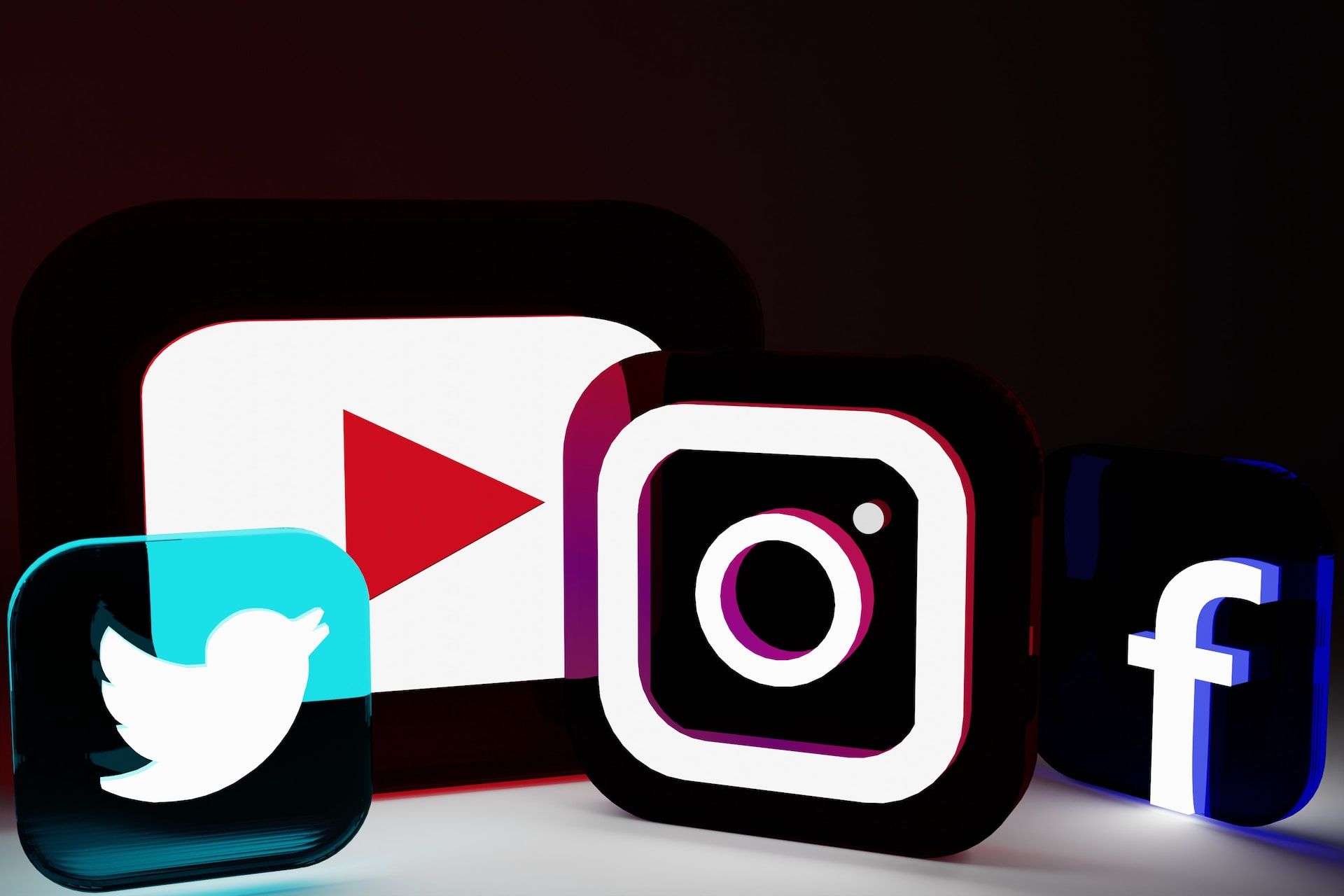Offline lead generation remains a powerful and indispensable tool in a marketer's arsenal. Despite the surge in online marketing tactics, offline lead-generation strategies hold a unique value that can significantly enhance a business's outreach and customer engagement efforts.
In this article, we'll explore offline lead generation, understand its importance, and explore how it complements online lead generation efforts to create a holistic marketing strategy.
What is Offline Lead Generation?
Offline lead generation refers to the process of attracting and converting potential customers or clients into leads without the use of digital channels. This traditional form of lead generation leverages various tactics and strategies that involve direct, in-person interactions or tangible marketing materials.
From attending networking events and trade shows to utilizing print advertising and direct mail, offline lead generation encompasses various activities to create personal connections and tangible experiences with your target audience.
At its core, offline lead generation is about returning to the basics of human interaction, where face-to-face meetings, handshakes, and the physical exchange of information play a crucial role. It's about creating memorable experiences that leave a lasting impression on potential leads, something that can sometimes get lost in the vast sea of digital content.
Importance of Offline Lead Generation
In an era dominated by digital media, it might seem counterintuitive to focus on offline strategies. However, the importance of offline lead generation cannot be overstated.
Here are a few reasons why:
- Personal Touch: Offline interactions provide a personal touch that digital channels often lack. The opportunity to meet potential clients in person, understand their needs firsthand, and build rapport through genuine conversations can lead to stronger, more trusting relationships.
- Differentiation: In a market saturated with digital ads and online content, offline lead-generation strategies can help your business stand out. Taking a different approach makes you more likely to capture the attention of potential leads who are bombarded with digital marketing messages daily.
- Complementary Strategies: Offline lead generation doesn't exist in a vacuum. Instead, it complements online strategies, creating a cohesive and comprehensive marketing approach. For instance, a conversation started at a trade show can be continued online through email follow-ups, integrating both offline and online touchpoints.
- Reach Diverse Audiences: Not all target audiences are equally responsive to digital marketing. Some demographics, particularly in certain industries, still value traditional communication and business methods. Offline lead generation allows you to tap into these segments, expanding your reach.
- Tangible Impressions: Physical marketing materials, such as brochures, business cards, or product samples, leave a tangible impression that can be more memorable than digital ads. These items can sit on a potential client's desk, constantly reminding you of your business, which is not as easily dismissed as an online ad.
8 Effective Offline Lead Generation Strategies
Offline lead generation strategies offer a refreshing and impactful way to connect with potential customers on a more personal level. By leveraging the power of face-to-face interactions and tangible marketing materials, businesses can create memorable experiences that resonate with their audience.
Let's explore a variety of effective offline lead-generation tactics that can help you stand out in a crowded market and build stronger relationships with your prospects.
1. Using QR Codes for Offline Lead Generation

QR codes serve as a bridge between the physical and digital worlds, offering an innovative way to engage with your audience offline while seamlessly connecting them to your online content. Here are some strategic ways to incorporate QR codes into your offline lead-generation efforts:
- Event Handouts: At networking events or conferences, distribute handouts with QR codes that link to exclusive content, such as a detailed whitepaper or a sign-up page for a free consultation.
- Product Packaging: Include QR codes on your product packaging to direct customers to online resources, such as user manuals, how-to videos, or related products.
- Outdoor Advertising: Utilize QR codes in outdoor advertising, like billboards or posters, to offer passersby a quick way to learn more about your services or access special promotions.
- Interactive Print Ads: Incorporate QR codes into your print advertising that lead to interactive online experiences, such as augmented reality demos, detailed product information, or exclusive offers.
- Direct Mail with Digital Twist: Send out direct mail pieces with QR codes that direct recipients to online landing pages, where they can access special content, register for events, or claim discounts.
2. Direct Mail
Direct mail is a powerful tool for offline lead generation, offering a tangible way to capture the attention of your target audience. To make the most of direct mail campaigns, keep these tips in mind:
- Segment Your Audience: Tailor your direct mail campaigns to specific audience segments based on their interests, demographics, or past interactions with your brand.
- Include a Strong Call-to-Action: Make it clear what you want the recipient to do next, whether it's visiting a website, redeeming a coupon, or scheduling a meeting.
- Track and Measure: Use tracking methods, such as unique URLs or promo codes, to measure the effectiveness of your direct mail campaigns and adjust your strategy accordingly.
3. Trade Shows

Trade shows offer a unique opportunity to showcase your products or services to a targeted audience in a dynamic, interactive environment. To make the most of trade shows for lead generation:
- Strategic Booth Placement: Invest in a booth location with high foot traffic to maximize visibility and engagement.
- Pre-Show Promotion: Promote your attendance at the trade show through email campaigns, social media, and your website to generate buzz and schedule meetings in advance.
- Collect and Follow-Up: Make it easy for booth visitors to leave their contact information and follow up promptly after the show with personalized messages to nurture those leads.
4. Cold Calling
While cold calling can be challenging, it remains an effective strategy for generating leads correctly. Here are some best practices for successful cold calling:
- Research Your Prospects: Before making a call, research the prospect and their business to personalize your pitch and address their needs and challenges.
- Practice Active Listening: Engage in a two-way conversation by asking open-ended questions and listening to the prospect's responses to identify opportunities to provide value.
- Follow a Script, But Be Flexible: While having a script can ensure you cover key points, be prepared to adapt the conversation based on the prospect's reactions and interests.
5. Networking Events

Networking events are a goldmine for offline lead generation, providing the perfect platform to meet potential clients and industry peers in person. To maximize the benefits of networking events, consider these strategies:
- Set Clear Objectives: Before attending an event, set clear objectives for what you want to achieve, whether collecting a certain number of leads, connecting with specific individuals, or promoting a new product.
- Engage Authentically: Focus on building genuine relationships rather than just selling your services. Ask questions, listen actively, and engage in meaningful conversations to establish trust and rapport.
- Leverage Social Media: Use social media to connect with attendees before, during, and after the event. Share insights, join event-related discussions, and post about your experiences to extend your reach.
6. Print Advertising
Print advertising, including newspapers, magazines, and industry publications, can effectively reach specific audiences, particularly in niche markets. To leverage print advertising for lead generation:
- Choose the Right Publication: Select publications that are well-regarded by your target audience to ensure potential leads see your ads.
- Design Compelling Ads: Create visually appealing ads with clear messaging and a strong call-to-action to encourage readers to take the next step.
- Combine with Digital: Enhance the effectiveness of your print ads by including digital elements, such as QR codes or URLs, to bridge the gap between offline and online engagement.
7. Online Registration for Offline Events
Utilizing online registration forms for seminars, webinars, or trade shows serves as an effective bridge between your digital and physical marketing efforts. This approach not only streamlines the registration process but also opens up a plethora of opportunities to collect valuable lead information, setting the stage for a more personalized and engaging experience.
Here's a deeper look into how online registration can amplify your offline event's success:
- Pre-Event Engagement: Online registration is the first touchpoint in the attendee journey, making it crucial to create a positive and seamless experience. By integrating engaging content, such as teaser videos, speaker bios, or interactive schedules, you can start building excitement and anticipation for the event.
- Data Collection and Personalization: The registration process is an invaluable opportunity to gather insights about your attendees. Beyond basic contact information, consider asking for preferences related to session topics, dietary restrictions, or specific interests related to your industry.
8. Social Media Contests at Offline Events

Organize contests or giveaways during offline events that require participants to engage with your brand online, such as posting on social media with a specific hashtag or following your brand's page.
Here's how to extend and enrich this strategy for maximum impact:
- Creative Contest Ideas: Think beyond simple photo tags; consider contests that encourage creativity and interaction with your brand. For example, a challenge could involve participants creating a short video testimonial about their experience at your event or demonstrating your product in an innovative way.
- Leveraging Multiple Platforms: While focusing on just one social media platform might be tempting, diversifying across multiple channels can broaden your reach. Tailor your content to fit the unique features and audience demographics of platforms like Instagram, Twitter, Facebook, LinkedIn, and TikTok.
- Incentivizing Participation: A compelling incentive is the key to a successful social media contest. Prizes should be valuable enough to encourage participation but also relevant to your brand and audience. Exclusive products, VIP services, or special discounts can be highly effective.
- Real-Time Interaction: Encourage real-time posts and interactions during the event by setting up designated 'selfie spots' or 'tweet stations' with branded backdrops. This facilitates immediate engagement and creates a fun, interactive element for your event, making it more memorable for attendees.
Comparison of Online & Offline Lead Generation

The debate between online and offline strategies is ongoing in the realm of lead generation. Each has unique advantages and limitations, and understanding these can help marketers craft a strategy that leverages the best of both worlds. Let's dive into the nuances of online and offline lead generation, exploring their pros and cons to help you make informed decisions that align with your business goals.
Defining Online Lead Generation
Online lead generation encompasses all tactics that use the internet to attract and convert leads. This includes a wide array of digital strategies, such as content marketing, email campaigns, social media advertising, SEO, and PPC (pay-per-click) ads. The digital landscape offers a vast playground for marketers to reach potential customers globally with just a few clicks.
The primary allure of online lead generation is its broad reach and ability to target specific demographics precisely. Advanced analytics tools provide invaluable insights into campaign performance, allowing for real-time adjustments and optimization.
The truth is, there's no one-size-fits-all answer to whether offline or online lead generation is better. Each has its place in a comprehensive marketing strategy.
Let's break down the pros and cons:
Online Lead Generation:
Pros:
- Wide Reach: You can connect with a global audience without geographical limitations.
- Cost-Effective: Many online platforms offer free or low-cost marketing options.
- Targeted Campaigns: Sophisticated targeting options allow you to reach specific demographics.
- Measurable Results: Digital tools provide detailed analytics for measuring campaign effectiveness.
- Speed: Campaigns can be launched quickly, and real-time adjustments can be made.
Cons:
- High Competition: The digital space is crowded, making it harder to stand out.
- Digital Fatigue: Consumers are bombarded with online ads, leading to ad fatigue.
- Less Personal: Digital interactions can lack the personal touch of face-to-face meetings.
Offline Lead Generation:
Pros:
- Personal Connection: Direct interactions create stronger, more personal connections.
- Stand Out: In a digital-heavy world, offline tactics can be more memorable and unique.
- Tangible Materials: Physical marketing materials can leave a lasting impression.
- Diverse Audience Reach: Some demographics respond better to offline strategies.
Cons:
- Higher Cost: Some offline strategies, like print advertising or trade shows, can be expensive.
- Limited Reach: Geographical limitations can restrict the audience size.
- Harder to Measure: Tracking ROI and the effectiveness of offline strategies can be more challenging.
Measuring and Tracking ROI of Offline Lead Generation Strategies
Measuring the return on investment (ROI) for offline lead generation strategies is crucial for understanding their effectiveness and how they contribute to your overall marketing goals.
Unlike online strategies, where analytics platforms can provide a wealth of data at the click of a button, tracking the ROI of offline activities can be more challenging—but it's far from impossible.
With the right approach and tools, you can gain valuable insights into the performance of your offline lead-generation efforts and make informed decisions to optimize them. Let's dive into the key strategies for measuring and tracking the ROI of your offline lead-generation activities.
Critical Metrics to Track
To effectively measure the ROI of offline lead generation, it's important to identify which metrics are most relevant to your goals. Here are some key metrics to consider:
- Lead Quantity and Quality: Track the number of leads generated from each offline activity and assess their quality based on criteria like lead engagement, conversion rates, and the potential value they bring to your business.
- Cost Per Lead (CPL): Calculate the total cost of each offline lead generation activity and divide it by the number of leads generated to understand the cost-effectiveness of each tactic.
- Conversion Rates: Monitor how many offline leads convert into customers or take a desired action, such as signing up for a newsletter or purchasing.
- Customer Lifetime Value (CLV): Estimate the total revenue a customer is expected to generate throughout their relationship with your company. This helps assess the long-term value of leads acquired through offline strategies.
Implementing Tracking Methods for Offline Activities
To replicate the success of the case study in your own business, consider implementing the following tracking methods for your offline lead generation activities:
- Unique URLs and Landing Pages: Create unique landing pages for offline campaigns, allowing you to track visits, conversions, and other key metrics specific to each activity.
- Promo Codes and Coupons: Use promo codes and coupons that are exclusive to specific offline channels or events. This incentivizes action and helps you track the source of leads and conversions.
- Call Tracking: Use different phone numbers for various offline campaigns to track which ones generate the most calls and inquiries. Modern call-tracking software can also provide insights into call duration, caller location, and conversion outcomes.
- Surveys and Feedback Forms: Collect feedback from new customers about how they heard about your business. This can be done through surveys, feedback forms, or during the sales process.
Conclusion
Whether it's the personal connection forged at networking events, the tangible impact of direct mail, or the dynamic engagement at trade shows, offline tactics offer unique advantages that can significantly enhance your overall lead-generation efforts.
The key to success lies in integrating offline and online strategies, creating a seamless marketing experience that resonates with your audience across all touchpoints. By measuring and tracking the ROI of your offline activities, you can refine your approach, invest in what works, and continually adapt to meet the evolving needs of your target market.
In the end, offline lead generation is not just about capturing leads; it's about building relationships, making memorable impressions, and laying the foundation for long-term business growth.
FAQ
Why is offline lead generation important in a digital world?
Despite the prevalence of digital marketing, offline lead generation remains important for several reasons: it offers a personal touch that digital channels often lack, helps your business stand out in a crowded digital market, reaches audiences less responsive to online marketing, and creates memorable, tangible impressions.
How can I measure the ROI of offline lead generation activities?
Measuring the ROI of offline activities involves tracking specific metrics such as lead quantity and quality, cost per lead, conversion rates, and customer lifetime value. Implementing tracking methods like unique URLs, promo codes, call tracking, and surveys can help link offline activities to tangible results.
How can I integrate offline and online lead generation strategies?
Integrating offline and online strategies involves ensuring consistent messaging across channels, leveraging offline events for online content, using online tools to enhance offline interactions, and employing techniques like QR codes to connect offline promotional actions with online efforts.
Can offline lead generation strategies be tailored to specific industries or markets?
Yes, offline lead generation strategies can and should be tailored to fit specific industries or markets. Understanding your target audience's preferences and behaviors allows you to choose the most effective offline tactics, whether it's industry-specific trade shows, direct mail campaigns for local businesses, or networking events for professional services.
Check out our other blog posts:


